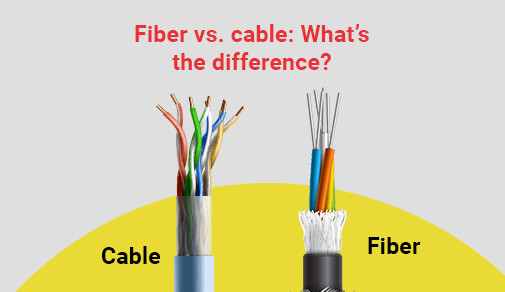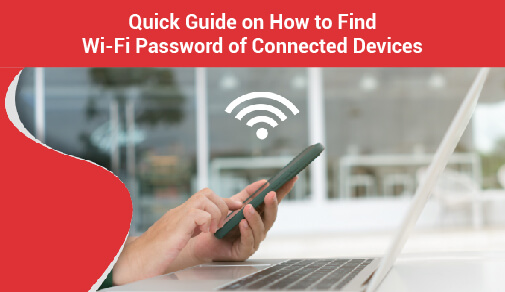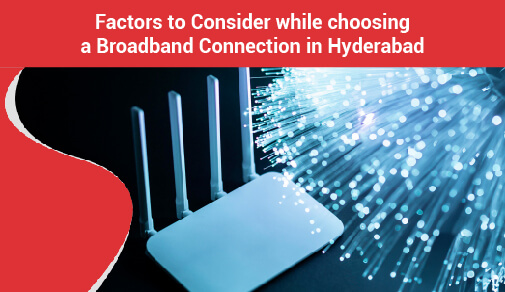What is the Difference Between Fibre Optic and Cable Internet?
-
0
-
-
8 minutes

With the plethora of internet plans available, the users are spoilt for choice. However, very few users focus on the type of internet connection they require. Fibernet connection and cable internet are the most popular forms of internet connection available in India.
The type of cables used to provide home internet access is the technological distinction between fibre and cable internet. Learn about the differences between these cables and why they matter in terms of speed, reliability, availability, and cost.
What is Fibre and Cable Internet?
Internet users are often unable to tell the clear differences between fibre-optic and cable internet. This is so because they do not know much about the transmission technologies used in both of these connection types. To gain more insights into the Fibernet connection and cable internet, let’s check the fundamental differences between the two:
1. Fibernet Connection
Fibre internet, also known as fibre-optic internet, is a form of broadband link that transmits data via light signals using fibre optic cables. Fibre optic internet is a more recent technology than cable internet, which is one of the reasons why it is not as widely accessible.
Fibre optic internet, on the other hand, is known for being faster and more secure than cable, DSL, or satellite internet. If a Fibernet connection is available in your area, it is certainly your best choice.
Fibre internet's biggest selling point is that it can provide speeds of up to 1 Gbps and that fibre-optic cables are less vulnerable to weather than conventional cables. Fibernet plans offer dedicated bandwidth and high-speed connection.
As a result, multiple devices can access the internet connection simultaneously without affecting the overall performance. Moreover, the internet remains stable even during the peak hours of the day. So, if you need a dedicated internet connection without any interference for professional or business reasons, fibre-optic plans must be your first priority.
Fibernet connections are usually of two types, viz. DIA connection and fibre-optic broadband. The DIA (Direct Internet Access) offers a dedicated fibre-optic network without any interruption. So, companies that depend on the internet connection for their business can prefer this type of connection.
Fibre-optic broadband also offers decent speed and bandwidth. However, it is more suitable for residential internet needs and small businesses that cannot afford the DIA network.
DIA offers a direct line to the office and also comes with static IPs. This type of Fibernet connection is also backed by SLAs (Service Level Agreements). So, it is much more reliable than a regular fibre broadband connection. Symmetric upload and download speeds, high-quality service, and no downtimes make it a great option for businesses and professionals.
2. Cable Internet
Cable internet is a form of broadband link that transmits data through radio frequency signals over copper coaxial cable lines. Since cable internet and cable TV use the same coaxial cable cord, most cable internet providers offer internet and TV package packages.
The coaxial cables usually contain a copper wire that is insulated with an aluminium or copper shield. A plastic layer covers the inner wire and protects it from external variables like heat, humidity, dust, etc.
Cable internet is a popular choice for internet access. Since the cables are much easier to install, they are much more accessible than a Fibernet connection. Even though cable internet is not as fast as fibre, it is still a better choice than DSL or satellite internet.
However, you may notice a speed reduction of up to 25% during peak hours of the day. The network connectivity may also fluctuate due to bad weather and other external conditions. Therefore, it is only suitable for residential internet needs and small businesses.
Is Fibre Internet Better than Cable Internet?
Fibernet connection is certainly a better choice than cable internet. While cable internet plans are the cheapest, fibre-optic ones provide much faster upload and download speeds. As a result, if you have the choice of choosing a fibre optic provider, that is your best option. Here are some factors that draw a clear distinction between Fibre-optic and cable internet:
1. Transmission Technology
Fibre optic and cable internet are two distinct technologies that facilitate high-speed data transmission. Therefore, each of them has unique characteristics and infrastructure.
A Fibernet connection uses thin strands of glass or plastic fibres to transmit data via light signals. These strands have a huge capacity for data transfer and are efficient when maintaining data integrity, even over long distances.
Cable internet uses coaxial cables made of copper or aluminium to transfer data via electrical signals. These cables have been traditionally used for television transmission, but with time, they have also been adapted for internet connections. So, if your cable TV provider also offers internet plans, it may be the cable internet connection.
2. Speed
In terms of speed, a Fibernet connection is far better than cable internet as it transmits data at lightning-fast speeds. A fibre-optic network supports transfers of data at much higher rates. So, it is ideal for data-intensive tasks such as streaming live videos in HD quality or playing online gaming.
Cable internet also offers decent, respectable speeds. However, it can be slow, especially during peak hours when more people use the internet. Fibernet connections are more reliable than cable internet as electromagnetic signals do not affect them. Also, the signals do not degrade over long distances. As a result, you get a stable and consistent internet connection.
Cable internet offers upload speeds up to 50 Mbps. The download speed may vary from 10 Mbps to 500 Mbps depending upon which time of the day you are using the internet.
Fibernet plans offer consistent upload and download speeds. Both upload and download speeds can range from 250 Mbps to 1 Gbps, depending on the plan you have selected. This makes fibre-optic connections the ideal choice for those who indulge in live streaming, video calls, video conferences, and other data-intensive activities.
3. Network Infrastructure
The infrastructure used in these two internet connection types also varies greatly. Fibre optic networks need dedicated optical cables, which are often dug deep into the ground or hung via utility poles. The installation process is more expensive and consumes more time as compared to cable internet which needs existing coaxial cable infrastructure.
The initial expenses required for fibre-optic infrastructure pay off in the long run. This is because it is more scalable and can fulfil the increasing data demands of internet users in the future.
Cable internet seems to be cost-effective initially but needs constant upgrades to keep up with evolving internet technologies. So, here also, the Fibernet connection takes the cake!
4. Availability
Another critical aspect of this comparison is the geographical availability of both these technologies. A fibre-optic internet is slowly expanding from tier-1 cities to tier-2 cities. However, laying the network infrastructure in rural and remote areas will require time. So, it is not available in all the regions currently.
On the other hand, cable internet is easily available even in towns and villages. Therefore, a wide section of the population can access it easily. So, the non-availability of the Fibernet connection would make it a less popular choice in most regions as of now. However, things would change with time as this technology is implemented in remote areas.
5. Durability
The durability of both these connection types also sets them apart from each other. Fibre-optic cables are damage-proof, i.e. they are less affected due to environmental factors. This makes them more resilient in adverse climatic conditions.
As the cable internet comprises metal cables, it is more susceptible to damage. So, drastic climatic conditions could potentially interrupt the internet services or degrade their performance.
6. Security
Security is also a major factor that clearly distinguishes between these internet technologies. A Fibernet connection is inherently more secure as it does not transmit electromagnetic signals which a third person can easily intercept. This feature protects fibre-optic internet from external interference or hackers compared to cable internet.
7. Installation & Maintenance
When it comes to installation and maintenance, fibre-optic connections need expert technicians who are trained to handle optical infrastructure equipment.
It is easier to install and find issues with cable internet. So, no specialised skills or knowledge are required to install and maintain it. This makes cable internet much more cost-effective, especially when it comes to the maintenance part.
8. Cost
When we speak of cost, cable internet is much more affordable in terms of initial installation and service charges. A Fibernet connection delivers superior performance but may incur higher upfront costs due to the unique equipment and infrastructure needed to install it.
Fibernet internet plans also may be slightly more expensive than regular cable internet. However, the long-term benefits in terms of higher speeds and more reliability justify the initial investment, especially if you do not want to compromise on speed, connectivity, and internet performance.
9. Scalability
Fibernet connections are scalable. This makes them advantageous for businesses and professionals who may need extensive internet plans in the future. Fibre-optic networks can easily fulfil increasing bandwidth demands by modifying the existing infrastructure. So, they are futuristic when it comes to the evolving needs of the users.
Cable internet may offer satisfactory performance in the start. However, it can face challenges when it comes to meeting the greater demands of growing user bases and emerging technologies.
The differences between fibre-optic and cable internet can be notable when it comes to speed, infrastructure, availability, durability, security, installation, maintenance, and cost. Fibre-optic internet is known for its high performance and is a more trustable and secure option despite its higher initial costs and non-availability in some regions.
Cable internet is generally more accessible and cost-effective. However, it cannot match the speed and reliability of a Fibernet connection. Ultimately, the final choice can vary as per individual preferences, location, budget, and the unique requirements of an individual or business.
Conclusion
In terms of speed, ACT Corp internet connections deliver higher speeds when compared to DSL and cable connections, the speeds can range from 150 Mbps to 1000 Mbps.The significant difference between DSL and cable is that cable uses coaxial lines to transmit data with more bandwidth.
Whereas, DSL or direct subscriber lines use old telephone lines. A Fibernet connection is more reliable, secure, and fast than DSL and cable internet connections. A Fibernet connection also offers equal download and upload speeds, making it more desirable.
ACT Fibernet is a pioneer of fibernet technology in India. If you are looking for a high-speed Fibernet internet connection for your home or office, you can check out ACT Fibernet’s internet plans here.







